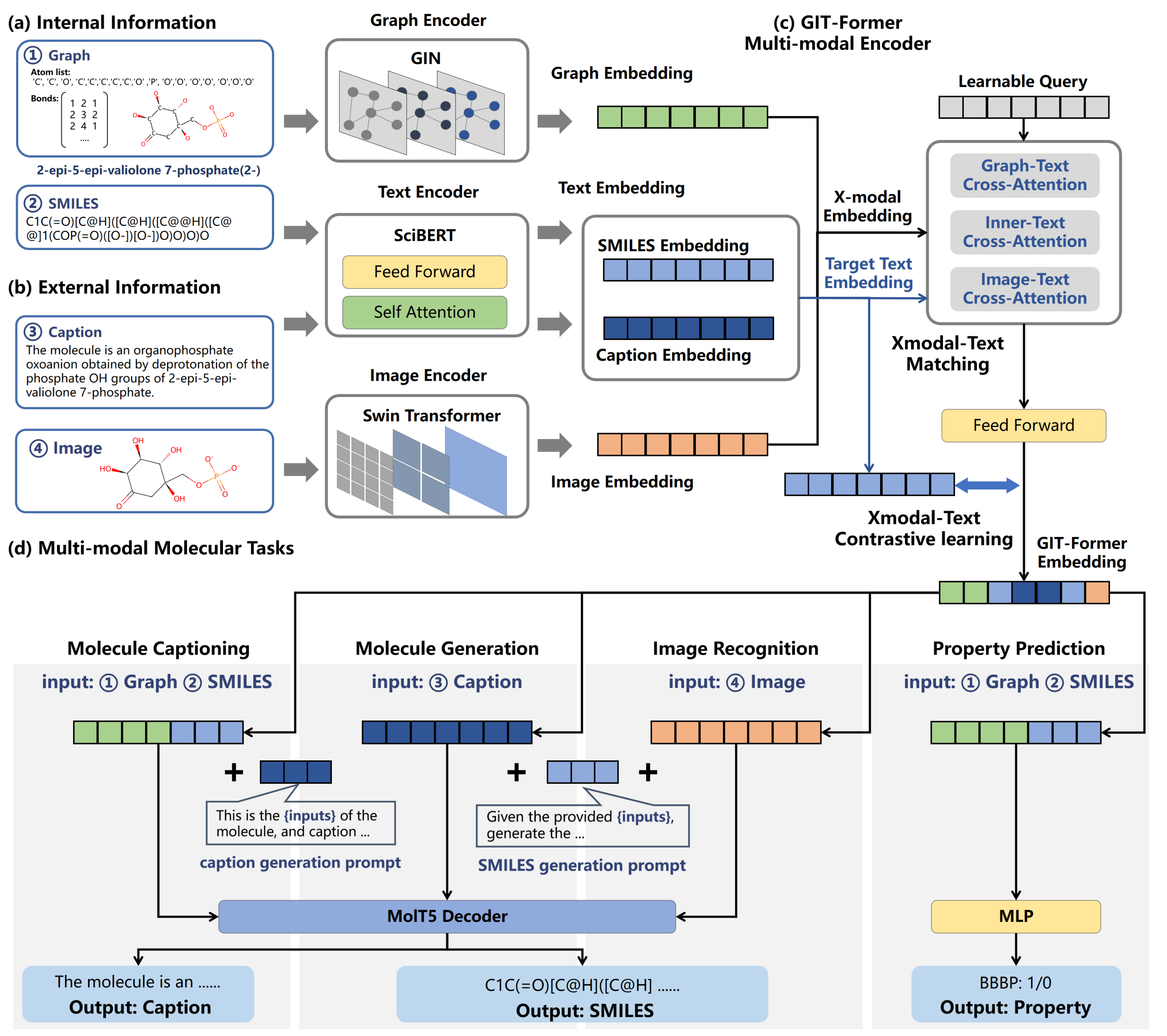A Molecular Multimodal Foundation Model Associating Molecule Graphs with Natural Language
Although artificial intelligence (AI) has made significant progress in understanding molecules in a wide range of fields, existing models generally acquire the single cognitive ability from the single molecular modality. Since the hierarchy of molecular knowledge is profound, even humans learn from different modalities including both intuitive diagrams and professional texts to assist their understanding. Inspired by this, we propose a molecular multimodal foundation model which is pretrained from molecular graphs and their semantically related textual data (crawled from published Scientific Citation Index papers) via contrastive learning. This AI model represents a critical attempt that directly bridges molecular graphs and natural language. Importantly, through capturing the specific and complementary information of the two modalities, our proposed model can better grasp molecular expertise. Experimental results show that our model not only exhibits promising performance in cross-modal tasks such as cross-modal retrieval and molecule caption, but also enhances molecular property prediction and possesses capability to generate meaningful molecular graphs from natural language descriptions. We believe that our model would have a broad impact on AI-empowered fields across disciplines such as biology, chemistry, materials, environment, and medicine, among others.
PDF AbstractCode
Datasets
| Task | Dataset | Model | Metric Name | Metric Value | Global Rank | Benchmark |
|---|---|---|---|---|---|---|
| Molecule Captioning | ChEBI-20 | MoMu+MolT5-Large | BLEU-2 | 59.9 | # 7 | |
| BLEU-4 | 51.5 | # 7 | ||||
| METEOR | 59.7 | # 12 | ||||
| Text2Mol | 58.2 | # 4 | ||||
| Molecule Captioning | ChEBI-20 | MoMu+MolT5-Small | BLEU-2 | 53.2 | # 18 | |
| BLEU-4 | 44.5 | # 18 | ||||
| METEOR | 55.7 | # 18 | ||||
| Text2Mol | 55.3 | # 10 | ||||
| Molecule Captioning | ChEBI-20 | MoMu+MolT5-Base | BLEU-2 | 54.9 | # 15 | |
| BLEU-4 | 46.2 | # 14 | ||||
| METEOR | 57.6 | # 15 | ||||
| Text2Mol | 55.8 | # 8 |





 ZINC
ZINC
 MoleculeNet
MoleculeNet
 S2ORC
S2ORC
 ChEBI-20
ChEBI-20
